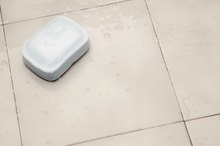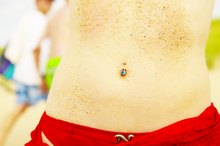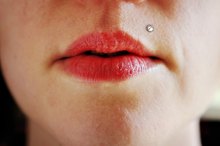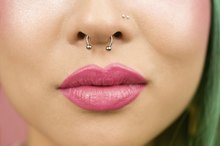What does fact checked mean?
At Healthfully, we strive to deliver objective content that is accurate and up-to-date. Our team periodically reviews articles in order to ensure content quality. The sources cited below consist of evidence from peer-reviewed journals, prominent medical organizations, academic associations, and government data.
The information contained on this site is for informational purposes only, and should not be used as a substitute for the advice of a professional health care provider. Please check with the appropriate physician regarding health questions and concerns. Although we strive to deliver accurate and up-to-date information, no guarantee to that effect is made.
Do Nose Piercings Leave Scars?
Nose piercings are generally safe and don't cause scars under healthy, normal conditions. Still, for some people, infection, allergy or the body's natural tendency to produce too much scar tissue can lead to scarring. Good piercing care, such as avoiding friction and cleaning your piercing properly, can go a long way toward preventing scars, according to the Association of Professional Piercers. Fortunately, dermatologists can help treat any scars that do form.
Occurrence
Scarring is a healthy, normal response to injury. The worse your injury and the longer it takes to heal, the more likely you are to develop a scar, according to the American Academy of Dermatology 1. There are two basic types of scars: common scars and keloid scars. Common scars are usually small, flat, pink or flesh-colored marks that fade over time. Keloid scars are raised scars that look like bubbles. Keloids can continue to grow until they're much larger than the area with the injured tissue. Not all people who get their noses pierced develop scars; however, people prone to keloids have a high chance of getting one on the pierced site.
- Scarring is a healthy, normal response to injury.
- Keloids can continue to grow until they're much larger than the area with the injured tissue.
Misconceptions
Side Effects of Piercings
Learn More
Some people mistake side effects of the natural healing process for scarring or conditions that will lead to scarring, and remove their piercings. Redness, swelling, crusting and small abscesses known as piercing pimples are normal parts of the healing process, according to the Association of Professional Piercers. Leaving the piercing in place helps foster healing more so than does removing it, because removing a piercing early when infection is present can lead to an abscess. The more tissue damage you have, the more likely the piercing is to scar. If you suspect an infection or scarring, talk to your piercer or a health care professional before you decide to take out the jewelry.
- Some people mistake side effects of the natural healing process for scarring or conditions that will lead to scarring, and remove their piercings.
Prevention
The better you take care of your nose piercing, the less likely you are to get scars related to infection and improper healing. Keep your nose piercing clean by washing the area with mild antibacterial soap. Leave the jewelry in for at least six weeks or until the piercing is completely healed. Removing it early could lead to an infection or abscess, which could lead to scarring. Keep your hands away from the piercing and avoid the urge to touch or fiddle with it. Avoid sun exposure as the tissue heals.
- The better you take care of your nose piercing, the less likely you are to get scars related to infection and improper healing.
- Keep your hands away from the piercing and avoid the urge to touch or fiddle with it.
Removal of Common Scars
Aftercare Instructions for Navel Piercing
Learn More
Many people think scars are permanent, and while they can be, most common scars fade or disappear completely over time, according to the American Academy of Dermatology 1. If they bother you, common scars can be removed through surgery, laser skin treatments or microdermabrasion treatments at your dermatologist's office.
Removal of Keloid Scars
Keloid scars are difficult to manage and often return after treatment, so your dermatologist will have to develop a treatment plan for these scars. Keloid treatment can involve surgery, pressure bandages, corticosteroid injections and topical creams that may prevent the keloid from regrowing. People who regularly develop keloids should consider avoiding future piercings or take special precautions to help reduce keloid formation, according to FamilyDoctor.org.
Related Articles
References
Writer Bio
A Jill-of-all-trades, Lillian Downey is a certified Responsible Sexuality Educator, certified clinical phlebotomist and a certified non-profit administrator. She's also written extensively on gardening and cooking. She also authors blogs on nail art blog and women's self esteem.









